![]()
![]()
![]()
Use LEFT and RIGHT arrow keys to navigate between flashcards;
Use UP and DOWN arrow keys to flip the card;
H to show hint;
A reads text to speech;
10 Cards in this Set
- Front
- Back

|
Jan van Eyck:
No one point perspective Mirror Dog represents loyalty, companionship Dress color complements bed Shoes off because on holy ground Mirror -- > connection with Velazquez |
|
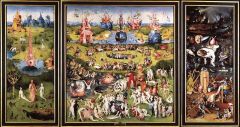
|
Hieronymus Bosch:
Triptych Glass all throughout Enlarged fruit and animals -- > sins of consumption, basal level triumphal procession of human pleasure panel on left is Garden of Eden, no sin, creating Eve Animals fighting over food --> foreshadow bunnies near women = fertility Hell shown with Bosch's portrait Gluttony of king in the underworld
|
|
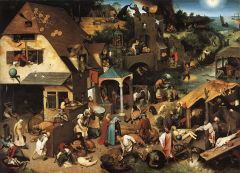
|
Pieter Bruegel:
Picks up on Bosch influence but uses moral lessons instead Discombobulated structure reflects the point of parables that are short and not narratives Praise of Folly. World depicted many times
|
|
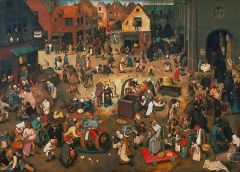
|
Pieter Bruegel:
Country coming to the City Antwerp depicted with people from everywhere Sense of Circle --> promenade Theatres of rhetoric depicted Center is possibly Breugel and wife turning back on religion |
|

|
Pieter Bruegel:
Hubris of Nimrod Allegory for Antwerp Architecture's connection to Rome --> Pope Leo's trying to resurrect Rome through St. Peter's |
|
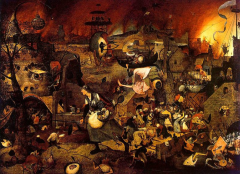
|
Pieter Bruegel:
Phillip II in 1557 cracking down on Reform Griet advancing towards Hell |
|
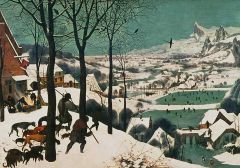
|
Pieter Bruegel: Hunters in the Snow (1565) pictaresque > leads eye down into the landscapes community and basic pleasure together |
|
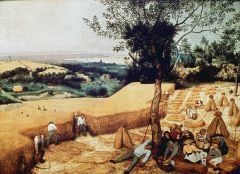
|
Pieter Bruegel: Realms of life present in the landscape with the church in the background and the workers in the front Perspective allows for workers expressions to be seen. Able to see individual stacks and meal being consumed |
|
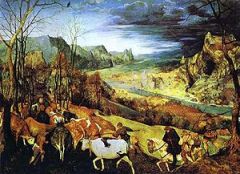
|
Pieter Bruegel: Return of the Herd (Autumn) (1565) Part of the series of different seasons Gallows always present --> image of death everywhere |
|
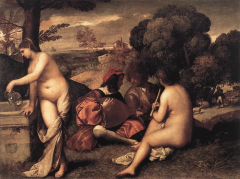
|
Giorgione or Titian:
Arcadia in Italy Joys of the out of doors Arcadia in the North is more good and work ethics, out of door to communicate with nature through work Engagement with the land --> releasse from the work, makes us whole |

